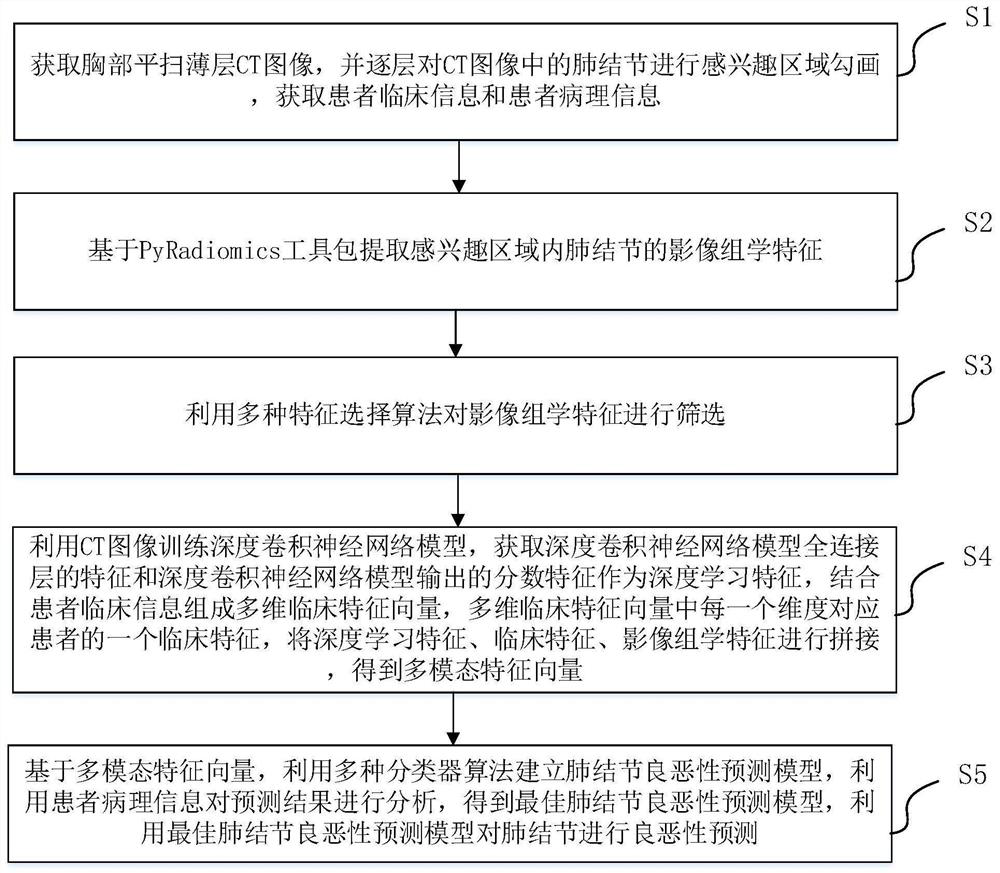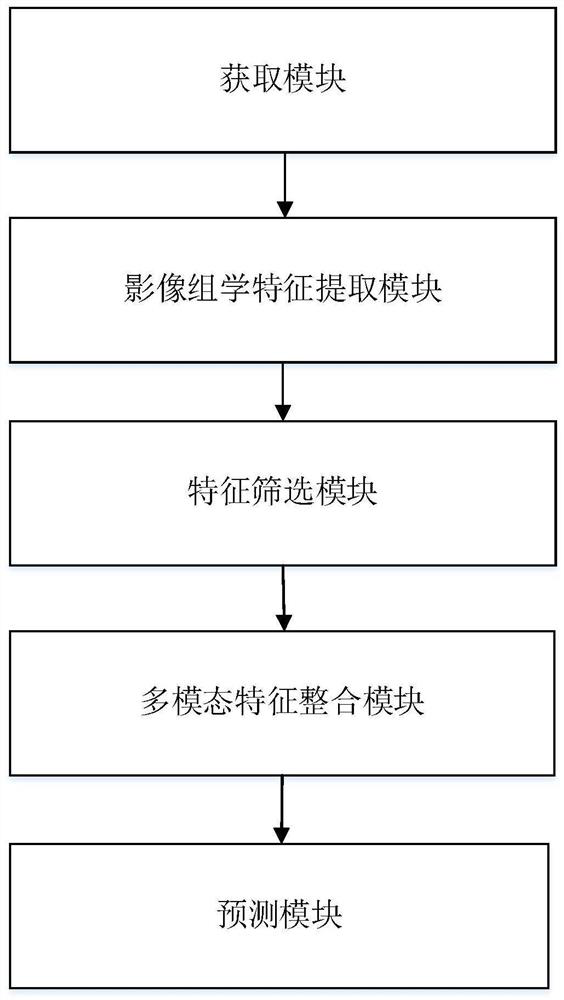Pulmonary nodule benign and malignant prediction method and device
A technology for pulmonary nodules, benign and malignant, applied in the computer field, can solve the problems of poor prediction effect, difficulty in judging benign and malignant, and low accuracy, and achieve the effect of improving the prediction effect and the prediction accuracy.
- Summary
- Abstract
- Description
- Claims
- Application Information
AI Technical Summary
Problems solved by technology
Method used
Image
Examples
Embodiment Construction
[0023] Exemplary embodiments of the present disclosure will be described in more detail below with reference to the accompanying drawings. Although exemplary embodiments of the present disclosure are shown in the drawings, it should be understood that the present disclosure may be embodied in various forms and should not be limited by the embodiments set forth herein. Rather, these embodiments are provided for more thorough understanding of the present disclosure and to fully convey the scope of the present disclosure to those skilled in the art.
[0024] combine figure 1 and figure 2 To describe the flow of the method for predicting benign and malignant pulmonary nodules provided by the embodiment of the present invention, see figure 1 and figure 2 , the method for predicting benign and malignant pulmonary nodules provided by the embodiments of the present invention includes:
[0025] S1. Acquire a flat-scan thin-slice CT image of the chest, delineate the region of inte...
PUM
 Login to View More
Login to View More Abstract
Description
Claims
Application Information
 Login to View More
Login to View More - R&D
- Intellectual Property
- Life Sciences
- Materials
- Tech Scout
- Unparalleled Data Quality
- Higher Quality Content
- 60% Fewer Hallucinations
Browse by: Latest US Patents, China's latest patents, Technical Efficacy Thesaurus, Application Domain, Technology Topic, Popular Technical Reports.
© 2025 PatSnap. All rights reserved.Legal|Privacy policy|Modern Slavery Act Transparency Statement|Sitemap|About US| Contact US: help@patsnap.com



